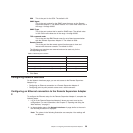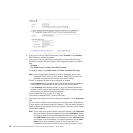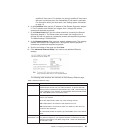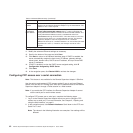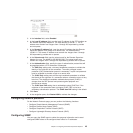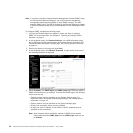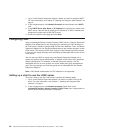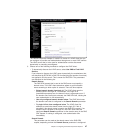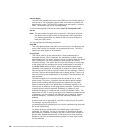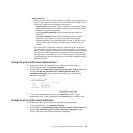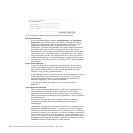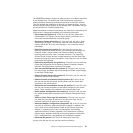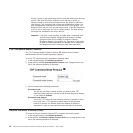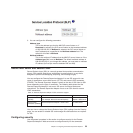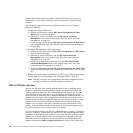
The Remote Supervisor Adapter II contains a Version 2.0 LDAP client that you
can configure to provide user authentication through one or more LDAP servers.
The LDAP server that is to be used for authentication can be discovered
dynamically or manually preconfigured.
3. Choose one of the following methods to configure the LDAP client:
v To dynamically discover the LDAP server, select Use DNS to Find LDAP
Servers.
If you choose to discover the LDAP server dynamically, the mechanisms that
are described by RFC2782 (a DNS RR for specifying the location of services)
are applied to find the server. This is known as DNS SRV. The parameters
are described in the following list:
Domain Source
The DNS SRV request that is sent to the DNS server must specify a
domain name. The LDAP client determines where to get this domain
name according to which option is selected. There are three options:
– Extract search domain from login id. The LDAP client uses the
domain name in the login ID. For example, if the login ID is
joesmith@mycompany.com, the domain name is mycompany.com. If
the domain name cannot be extracted, the DNS SRV fails, causing the
user authentication to fail automatically.
– Use only configured search domain below. The LDAP client uses
the domain name that is configured in the Search Domain parameter.
– Try login id first, then configured value. The LDAP client first
attempts to extract the domain name from the login ID. If this is
successful, this domain name is used in the DNS SRV request. If no
domain name is present in the login ID, the LDAP client uses the
configured Search Domain parameter as the domain name in the DNS
SRV request. If nothing is configured, user authentication fails
immediately.
Search
Domain
This parameter can be used as the domain name in the DNS SRV
request, depending on how the Domain Source parameter is configured.
Chapter 3. Configuring the Remote Supervisor Adapter II 47



